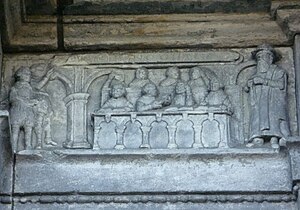
Education in early modern Scotland includes all forms of education within the modern borders of Scotland, between the end of the Middle Ages in the late fifteenth century and the beginnings of the Enlightenment in the mid-eighteenth century. By the sixteenth century such formal educational institutions as grammar schools, petty schools and sewing schools for girls were established in Scotland, while children of the nobility often studied under private tutors. Scotland had three universities, but the curriculum was limited and Scottish scholars had to go abroad to gain second degrees. These contacts were one of the most important ways in which the new ideas of Humanism were brought into Scottish intellectual life. Humanist concern with education and Latin culminated in the Education Act 1496.
After the Reformation the Humanist concern with education became part of a programme of godly education, with an attempt to establish a system of parish schools administered by the Church of Scotland (the "Kirk"). A new university was established in Edinburgh and the existing universities underwent a series of reforms associated with Andrew Melville that revitalised them and brought them up to the standards of Humanist scholarship and methods of teaching of institutions elsewhere. In the seventeenth century there were attempts to organise and finance the system of parish schools and a successful expansion of the university system. By the early eighteenth century the network of parish schools was reasonably complete in the Lowlands, but limited in the Highlands where it was supplemented by the Society in Scotland for Propagating Christian Knowledge. Scotland began to reap the benefits of its university system, with major early figures of the Enlightenment including Francis Hutcheson, Colin Maclaurin and David Hume.